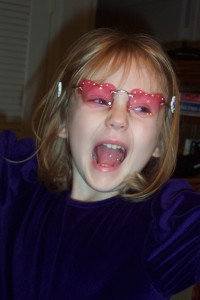This blog was originally published on this site in September 2015. I thought it would be good to re-publish it. There were no changes made to the original post.
The creativity of your subconscious mind not only shows up in dreams, but also shows up as archetypes in your life. Archetypes are overlying patterns that show up in all cultures that are seeded in the psyche. Some examples of archetypes are mother, judge, teacher and healer. When you begin to look at these patterns in your life, you can unleash your creative energy. You can access your natural path, heal your wounds and move toward your Divine Soul purpose.
Today we will explore the Bully Archetype. It is actually situations in my own life, well situations that I am privy to, that stimulate this writing on the Bully. The scope of the Bully archetype is massive. There is bullying in the workplace, on college campuses, in schools and schoolyards and as seen in the news on a daily basis today, there are bullies attempting to take over countries!
When looking at the psyche and bullying, there is even the issue of bullying yourself and internally beating yourself up. There is so much about this archetype that can be explored. This article is taking a small slice of the issue and will focus on parents who bully their children. This may be a difficult topic to read about, but I think you will find it valuable.
Recently, when listening to others share stories, the topic of abusive yelling has surfaced over and over again. As an adult, if someone yelled at me, I would just walk away. Children don’t have the ability to do this. The response is generally to shut down and be quiet, to fight back, or to get revenge.
 What is bullying and why do people bully? First of all there is a difference between bullying and having the bully archetype. There may be periods of time where someone uses bullying in his or her life and then learns skills to behave more appropriately. Having the bully archetype is when this tendency becomes a strong part of their personality. It becomes a pattern that directs their behavior in an attempt to dominate another person or ultimately, to control their own coward within.
What is bullying and why do people bully? First of all there is a difference between bullying and having the bully archetype. There may be periods of time where someone uses bullying in his or her life and then learns skills to behave more appropriately. Having the bully archetype is when this tendency becomes a strong part of their personality. It becomes a pattern that directs their behavior in an attempt to dominate another person or ultimately, to control their own coward within.
Bullies often use threats or coercion to gain power over another. They will intimidate and be abusive. Sometimes the bully will use physical power to dominate, but here I want to look at the emotional abuse of bullying.
Children especially are vulnerable and parents, in an attempt to control them may use yelling and threatening. They may resort to name-calling, shaming, and other aggressive measures. The reality is, in their attempt to control the child, they are really only showing that they themselves are out of control.
So what happens to these children who are bullied at home? One response is to become quiet and withdraw. On the outside they may appear to become a well-adjusted, compliant child, but on the inside they have a mind of constant negative self-talk. This self-talk can be anger directed at their parent, but more often, it is directed at themselves. This internal abuse becomes a survival technique. In their own attempt at gaining some control they use self-abuse. In some cases this is not just abusive self-talk, but turns into using sharp objects to physically cut on themselves. This may be to release the pain they feel. They want to let it out. When they do this, they may think no one else can hurt them as much as they can hurt themselves. The parent’s response to this may be to use force to try to control the child even more. They blame the child (the victim of the bullying) rather than looking at and owning their own behavior.
Some children become compliant and work hard so they are not abused. These children excel in school, on the football team and become the leaders in their community. They develop manipulative skills that serve them at home and in other areas of their lives. As adults these skills can go either way. They can help them catapult to the top or eventually destroy their relationships and career.
Sometimes children end up not using their full potential. They may be extremely bright, but end up with low grades. They may have mental health problems such as depression, anxiety, or behaviors such as over-eating or using drugs. Turning their fear, hurt and anger inward eats them alive. When these children become adults, these old wounds begin to surface in their relationships, their jobs, and in their health.
Another way that children survive is to rebel and fight back. What happens here is there is continual yelling, conflict and fighting between the child and the parent. It becomes a battle of the wills. The children may also run away to get away from the situation. These children often go on to bully others, including their siblings. Although they fight to gain power, ultimately the parent has the power because they control the money and the access to the child’s fun and freedom. For children, other than their need for love, their need for fun is essential. In this case the parent continues to be out of control and the child continues to suffer from emotional abuse.
Another way children respond the to bullying is to get revenge. There are several ways they do this. One is directly by breaking something of value to the parent. They may also “tell on” the parent. In this case they may tell their friends, reach out to a teacher, a neighbor, a relative or even the police. They may also share in front of others something embarrassing that the parent did. Often this is difficult for the child because, even though they are angry and feel the parent isn’t fair, they also feel at fault.
Another way they get revenge is indirectly through passive aggressive behavior. Passive aggressive behavior is a way that people express their anger, frustration or hostility indirectly. The child may not finish their chores or move really slowly when the parent is in a hurry. They could pick at something like a lampshade making small holes in it that are not noticeable to their dad. Children who underachieve may be being passive aggressive, especially if the parent has a high need for them to excel. Other passive aggressive behaviors are using sarcasm, being stubborn, or procrastinating. Whatever would get back at the parent without immediate repercussion gives them some sense of power.
So what should a child do when they have an abusive or bullying parent? It is important that they find a safe adult who can help them. As a reader of this article, I ask you to be aware of the children around you and to make sure that they know you are a safe adult. Talk to the children around you and get to know them. Build a rapport so they understand that you are someone they could trust and depend upon. You never know if the child is secretly suffering in her own home.
What if you find that you have the Bully Archetype fully active in your own life at this time? Whatever situation you find yourself in, if you find that you are yelling, name-calling, taking or breaking someone else’s belongings, or even pushing and shoving or other violence, it is important to get help!
There are so many resources for you. One I would suggest first is to find a counselor or a minister that you can confide in. Counselors will provide you with a safe place to learn how to manage your anger and to gain better control in your own life. If you have a child that is difficult to manage, a counselor can assist you with some parenting skills. What happens is the more out of control you feel, the more you try to solve the problem yourself and the less likely you are to resolve the issue. Remember the bully in you, the bully archetype is covering for the inner coward. It takes courage to reach out and get assistance. Seeing a counselor becomes a confidential place for you to share and it is the counselor’s job to listen, support, teach and provide resources for you.
Another resource in addition to counseling is to educate yourself about the problem. Search for books on dealing with your anger. The first step to changing a behavior is identifying it and owning it. You will be amazed at the relief you feel when you start to learn simple steps to shift the pattern that has taken over your life. If you find you are bullying someone, then you too are certainly bullying yourself in the process.
The Bully archetype may or may not be a significant archetypal pattern for you. If it is, remember archetypes cross cultures from the beginning of time and so you are not alone. This is a pattern that can be balanced. The positive attribute of the bully archetype is learning to become courageous. As you reflect, take notes on this and other archetypes you identify with. Notice what thoughts, feelings, and memories have surfaced for you when reading this article. Think about how others see you. Is there something you noticed that is blocking you from your Divine Soul Purpose?
This article was first published in Live Encounters Magazine.


